Lots of hairstyles seem to fit on long hair a bit “more beautifully” than on short hair, and some even fit only on long hair. So a healthy beautiful long hair is like a dream to many women. But sadly not all of us can have it easily. Or in another case, due to some reasons that our hair is no longer strong as it was, and waiting for it to grow long takes like years.
Contents
- HOW DO YOU GET YOUR HAIR TO GROW FASTER
- But first, do you know how fast does hair grow?
- First, clean and stimulate the scalp
- Take hair-growth supplements, especially collagen and biotin
- Protect hair from physical damage as much as possible
- Keep your hair moisturized
- Use antioxidants
- Wear protective hairstyles
- Don’t take the heat styling daily
- Get regular trims
HOW DO YOU GET YOUR HAIR TO GROW FASTER
No matter what your hair length goal is, if you’re looking for a guideline of how to make your hair grow faster, we’re here to help.
But first, do you know how fast does hair grow?
There is an average rate of hair growth for humans, that most people’s hair grows at the rate of half an inch per month. This means you will grow about 4-6 inches over a year. Though, it’s important to note that everyone’s hair growth rate will vary due to many factors – including genes, hormone levels, age, and more. That’s why you need some helps in finding right ways to encourage hair growth, since there’s no direct method to make your hair grow faster in a day or two.
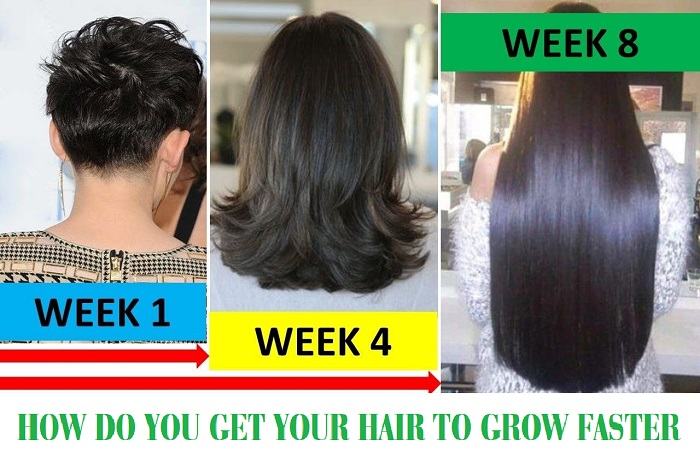
HOW DO YOU GET YOUR HAIR TO GROW FASTER
First, clean and stimulate the scalp
You want to help your hair grow, start from the scalp. A chronically inflamed scalp, which caused by scalp tension, buildup, oxidative stress, and scalp conditions like dermatitis, can lead to hair loss or thinning. There’s a study showed that inflammation caused by pollution and oxidative stress is one of the main causes of hair loss in adults.
This happens because the inflammation starts to close off the hair follicle, limiting growth and eventually leading to shedding. This inflammation will affect the quality of your hair growth. It happens when you have product, dirt, and oil building up around your follicle opening – where your hair grows out of – and that buildup starts to slowly suffocate your hair root.
So, make sure you are regularly washing your scalp with gentle washes. Massage the scalp while shampooing can increase the flow of blood, relieve stress, and stimulate hair follicles. Additionally, regular massages have been shown to promote hair growth. Scalp massages encourage blood circulation to the area, which helps deliver vital nutrients and oxygen to the hair follicle.
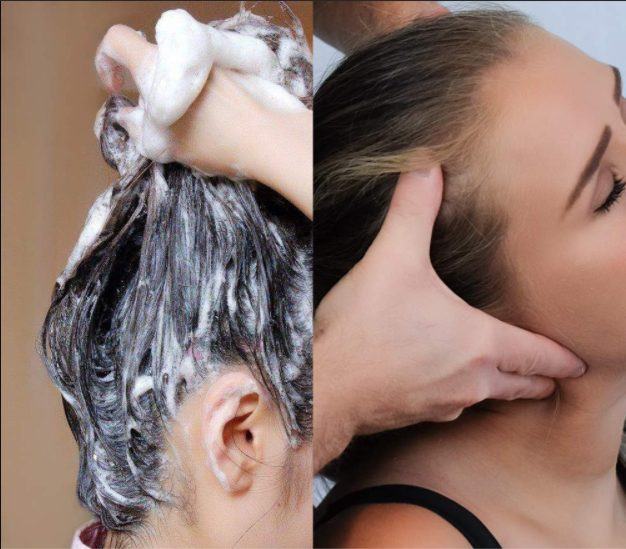
Take hair-growth supplements, especially collagen and biotin
These two ingredients help promote hair health and growth by providing the body with all the right nutrients. Hair is made of the protein keratin, which has an amino acid profile including cysteine, serine, glutamic acid, glycine, and proline. Both collagen and biotin supplements have high amounts of many of these amino acids, so it’ll provide the body with the building blocks of hair.
Biotin is perhaps most famous for its healthy-hair benefits, as it’s one of the main actives in a lot of hair-growth supplements. “Thinning hair and hair loss are very common symptoms and can be supported with the addition of biotin. This is especially true if you have low levels of biotin – which has been shown to lead to hair loss,” functional medicine practitioner and mbg Collective member William Cole, D.C., tells mbg. You can get tested for biotin deficiencies by your doctor. Additionally, biotin is believed to naturally promote healthy hair growth because it is involved in the production of keratin, the main component of hair.
As for collagen, it can further help hair growth by supporting the scalp in the same way that collagen can help manage skin health overall. Hydrolyzed collagen peptides encourage the body’s natural production of collagen, which is then delivered to the rest of the body – including the scalp.
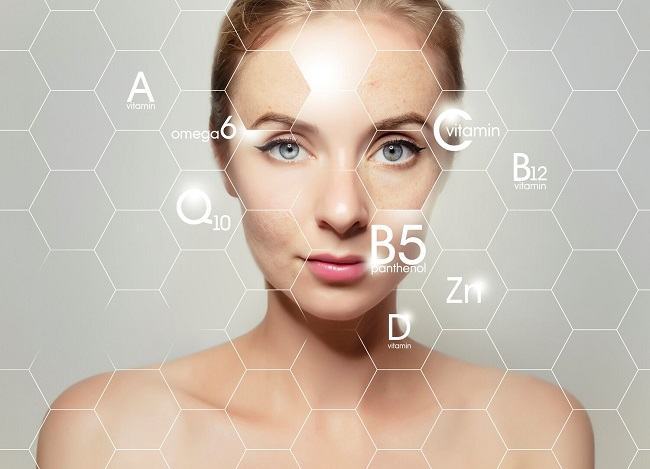
Protect hair from physical damage as much as possible
This doesn’t necessarily encourage growth, but it does protect the hair length you already have. Physical damage leads to breakage. It’s caused by daily wear and tear, harsh brushing, or the shower. And while the occasional snapped strand is perfectly normal, having breakage-prone hair can make achieving your length goals nearly impossible.
Too-tight hairstyles can cause friction and pulling, so consider using soft hair ties. You should also consider switching up your style regularly so you’re not putting pressure on the same spot day in day out.
Another way to protect it from physical damage is how you brush it: You should always brush from the tips up – starting from the root is a recipe for frayed ends. Be mindful of how you are shampooing and showering as hair is most vulnerable when wet. If you wash too aggressively you can cause knots and tangles that are difficult to get out.
Finally, care about how you wear it when you work out: Since most of us keep the hair out of our faces when moving, we often pull it tight. Too-tight hairstyles, as noted above, cause friction. Wear one of these styles – like a braid, for example – when working out to lessen damage.
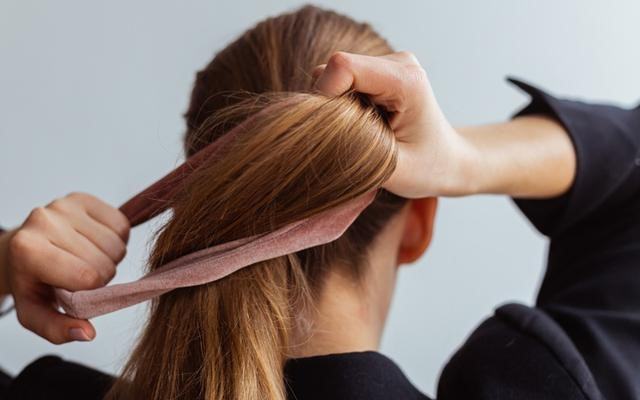
Keep your hair moisturized
The hair on your head is probably the driest thing on the body, and if you are trying to grow it longer, you need to keep it moisturized. If your texture is naturally drier, it is even more essential to keep hair hydrated. Dry hair turns to brittle hair and brittle hair breaks.
If your hair is dry and brittle, you likely have open cuticles. When cuticles are open or lifted, it means they are not sealed down; this allows moisture and nutrients to escape easier. (Some people are just more prone to this, while others may have open cuticles from chemical treatments, like coloring).
However, conditioning agents can actually help seal the cuticle down. This not only helps trap in water and your hair’s nutrients, but a closed cuticle means less friction between the strands, and that also means less breakage.
Of course everyone’s hair needs are different. That’s why for some a simple conditioner will do the trick, while others will need weekly hydrating hair masks and oil treatments.
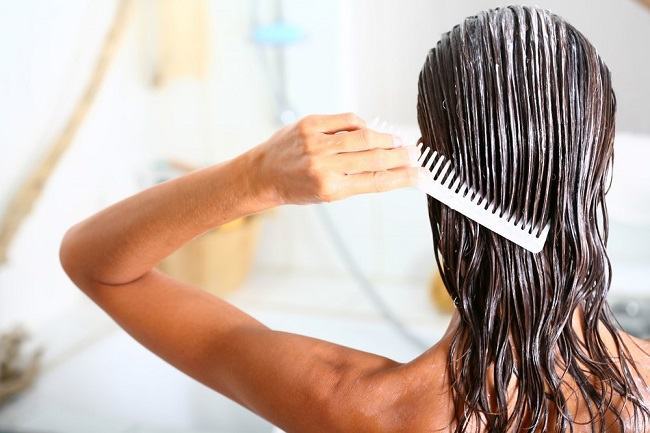
Use antioxidants
People experience hair thinning as they get older, that’s a fact. One way that research has shown to help hair aging is antioxidants, as they manage oxidative stress and neutralize free radicals. Make sure you eat foods high in antioxidants or add a vitamin-rich supplement to your diet. Vitamin C, for example, plays a really big role in promoting collagen production and that helps strengthen hair.
You can also use topical antioxidants, in the form of hair oils, serums, or sprays, which is especially helpful with free radical damage that comes with UV rays or pollution. Just look for products that contain vitamins or other common antioxidants like vitamin E.

Wear protective hairstyles
While any tip on this list is applicable for any hair type, those with textured, natural hair also likely need to wear protective styles from time to time.
Protective hairstyles are wonderful for growing hair out, transitioning between two different hair textures (i.e., textured versus straightened), minimizing the daily hair routine, covering the ends of hair, and safeguarding natural hair against harsh seasonal elements and damaging environmental factors.
A few examples we recommends: flat twists, cornrow ponytails, and box braids. And to avoid scalp tension – which can lead to traction alopecia, a medical condition in which chronic too-tight hairstyles causes hair loss, you should switch these hairstyles out every two weeks and give yourself breaks between them.
Protective styles are simply those that help those with kinky, oily hair to prolong their time between wetting and re-styling so you aren’t causing regular damage. And note that prep is just as important as the style. For example, if you have a really tight texture, blow-dry the hair first and load up on leave-in conditioners so the hair is sufficiently hydrated. If you have a looser curl type you can style the hair while damp.
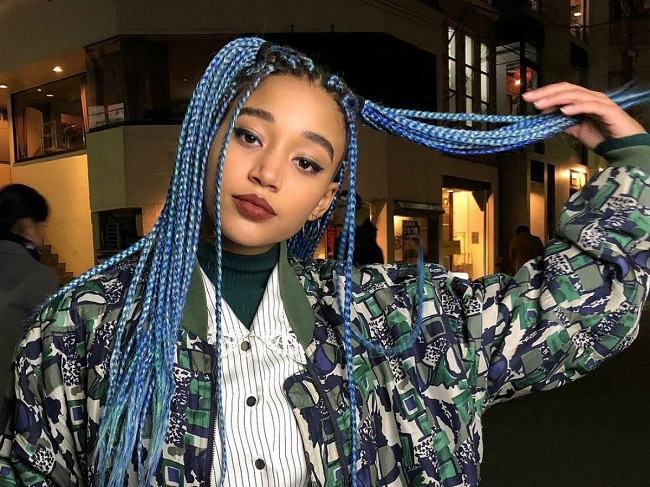
Don’t take the heat styling daily
If you are looking to strengthen and grow your hair, you cannot use hot tools daily. Heat styling works by breaking down the hydrogen bonds in hair—that’s how it restructures and restyles your hair pattern (be it straightening curls or adding curls to straight hair). And when you do this too much, it causes damage. One study found that regular styling with hot tools significantly decreased moisture content and increased breakage.
If you do use a hot tool, make sure to use a heat protectant that can stand the heat: Look for something that will protect up to 400°F (how hot some blow dryers and irons can get) or if you use natural oils, the higher the smoke point, the better.
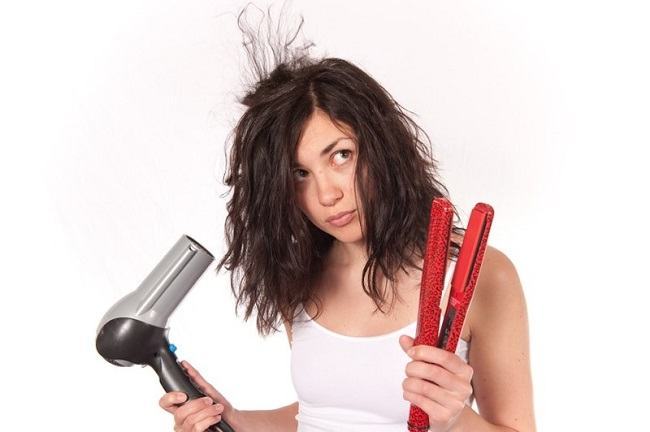
Get regular trims
A common hair care tip that hold some truth to it: regular trims can help you get the dream long hair, sort of. Hair growth stems from the follicles on our scalps, not the ends of our hair; so, shearing off dead ends doesn’t actually affect the follicles up top. However, it helps keep breakage at bay. When you have split ends, the hair slowly splits up the shaft, which leads to breakage and slower ‘growth. Regular trims are the only way to eliminate those frays because you cannot heal or restore dry, damaged hair; and thus ensure healthy strands.
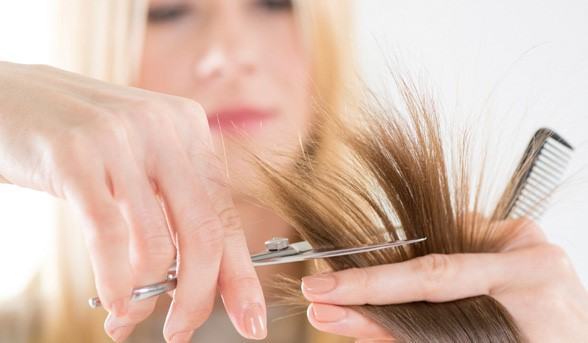
Those were some main advices about how to make your hair grow faster. Besides, we think you might want to take a quick note about factors that slow hair growth. They’re: crash diets, eating disorders (such as anorexia or bulimia), stress, smoking, and vitamin deficiencies.
And that’s it! Now you can help your hair grow faster to achieve the length you are wishing for. Remember that the process surely takes a long while, but it is worth it we promise, as after you can have your dream healthy long hair to upgrade your daily look.
